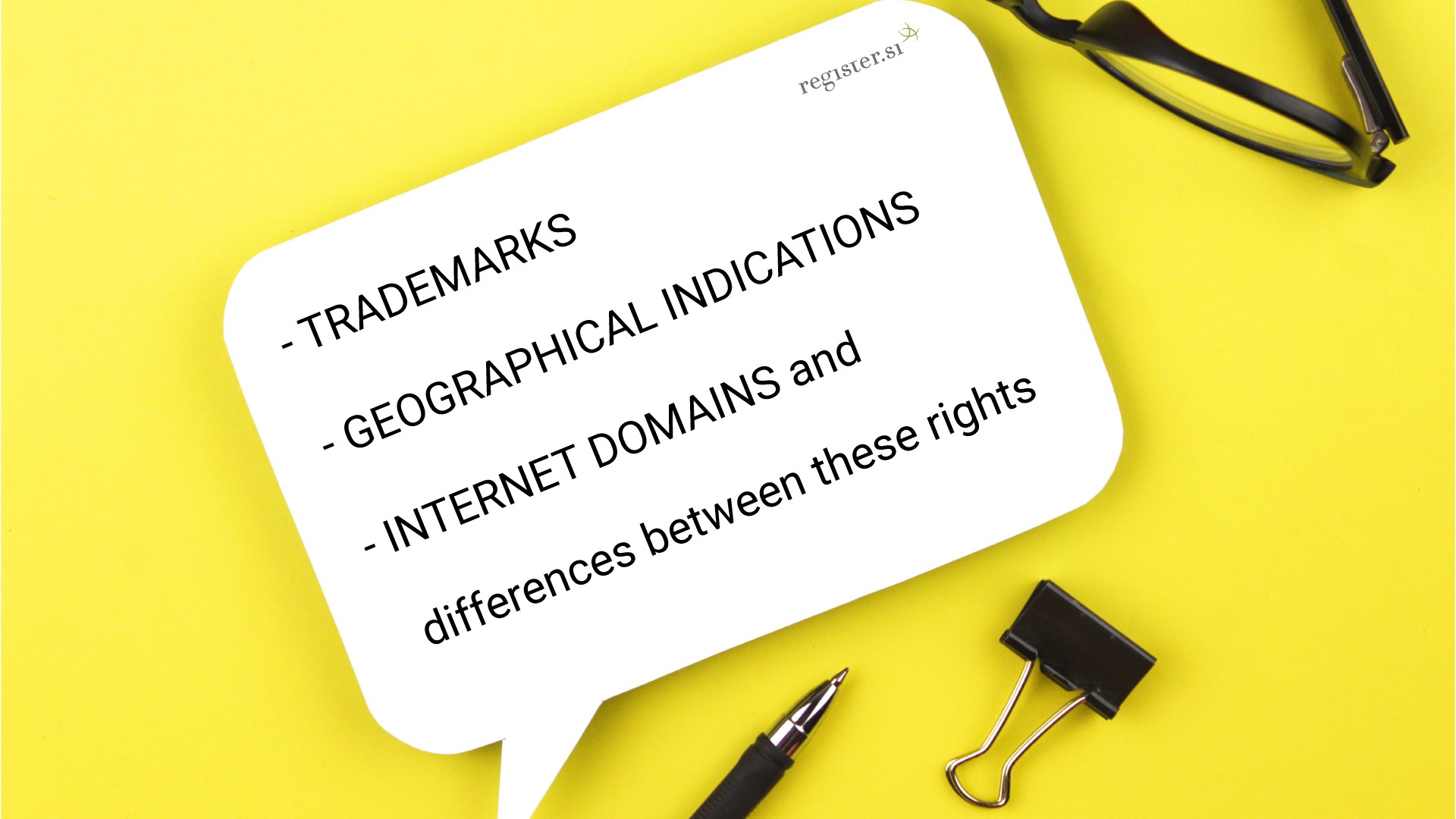Trademarks, geographical indications and internet domains
Trademarks, geographical indications and internet domains are three separate rights, but due to their similar use on the internet, they are often interconnected and therefore easily confused. Trademarks and geographical indication designate the origin of the goods or services and the connection between these goods/services and a specific provider. A domain can also have the same function.
However, despite their apparent interchangeability, there are important differences between these rights:
- A trademark is an industrial property right that gives the owner the right to mark his goods/services/content with his mark and thereby differentiate himself from other competitors on the market. In principle, a trademark is a registered right and is created through entry in the relevant register. A trademark is only valid in the territory of the country or countries where it is registered. A trademark valid in the territory of the Republic of Slovenia is registered with the Slovenian Intellectual Property Office. The EU trademark, which is valid in all EU member states and registered with the EU Intellectual Property Office (EUIPO), is also very useful for companies and individuals operating in the EU.
- A geographical indication is a mark indicating that goods originate from a certain territory, area or place, if the quality, reputation or some other characteristic of these goods is significantly dependent on their geographical origin. It is a label that is used for products that are tied to or originate from a certain area (most often food, agricultural products, wines, handicrafts, etc.). In Slovenia, the registration of geographical indications for agricultural products, foodstuffs, wines or other products made from grapes and wine is under the authority of the Ministry of Agriculture, Forestry and Food, while geographical indications for other goods are registered at the Slovenian Intellectual Property Office. Several different geographical indication registration schemes are in place in the EU, depending on the type of product being registered. Currently, two new Regulations are in the process of being adopted at the EU level, one for wine, spirit drinks and agricultural products and the other for craft and industrial products, which are intended to further unify the protection of geographical indications in the EU.
- An Internet domain is not an industrial property right, but the right to use an internet address that resolves to a specific website on the Internet. When a user types a domain name into their browser or clicks on a domain name link, their device will look up the corresponding numeric IP address of the desired website in the DNS system. Domains are registered with appropriate registries, usually through a system of web service providers called registrars. The registration of domains under the .si top-level domain is managed by the Registry .si, which is the national registry for our domestic top-level domain. Most countries have their own national registries for their top-level domains (e.g. .de, .hr, .it, etc.), and international registries provide registration of generic top-level domains (.com, .org, .info, etc.).
For a successful online business, it is important for providers to set themselves apart from their competitors. Therefore, branding – a comprehensive strategy of labelling products, services and content – is an essential part of a good online marketing strategy. Many companies want to secure both registered industrial property rights (such as trademark and geographical indication) as well as corresponding internet domains. These are desirable due to the borderless nature of the Internet, as they are accessible and usable all over the world and not only in the country where they are registered (as is the case with trademarks, for instance). However, the registration of a trademark or geographical indication does not automatically give its holder an automatic claim in registering the corresponding domain. Domains are not “reserved” for holders of trademarks, geographical indications and other rights. Since the domain registration system, at least for the top-level domain .si, is based on the principle of “first to file, first to receive”, anyone can register a free domain. The General terms and conditions of the Registry .si prohibit the registration of a domain that infringes upon pre-existing rights of third parties (e.g. trademarks and geographical indications), but the Registry .si does not monitor these violations ex officio and has the right, but not the duty, to refuse registration. Therefore, we recommend users to make sure that the domain does not infringe the rights of third parties before registering the domain – the tools are available here and here. Also, before filing a trademark or geographical indication application, users should ascertain whether the corresponding domain name is still available, e.g. via the WHOIS search engine (for .si domains, the search engine is available on the entry website of the Registry .si).
If the holder of a trademark, geographical indication or other right finds that a certain domain interferes with his rights, he has the option of initiating an alternative domain dispute resolution procedure at the Registry .si, requesting the transfer of the domain from its current holder to himself. However, he will have to prove that he has a stronger right to the domain and that the current holder is using it in bad faith. He can also initiate regular legal proceedings before the court, where he will have to prove essentially the same.
Therefore, we recommend to holders of trademarks, geographical indications and other rights, as well as to all those who are considering filing an application for these rights, to register the relevant internet domain in advance. In order to register a domain, it is not necessary to fulfill any previous conditions (as are required, for example, for the registration of a geographical indication), and the registration process is fast and affordable. In this way, companies already secure a domain that will correspond to their intellectual property right in advance.




